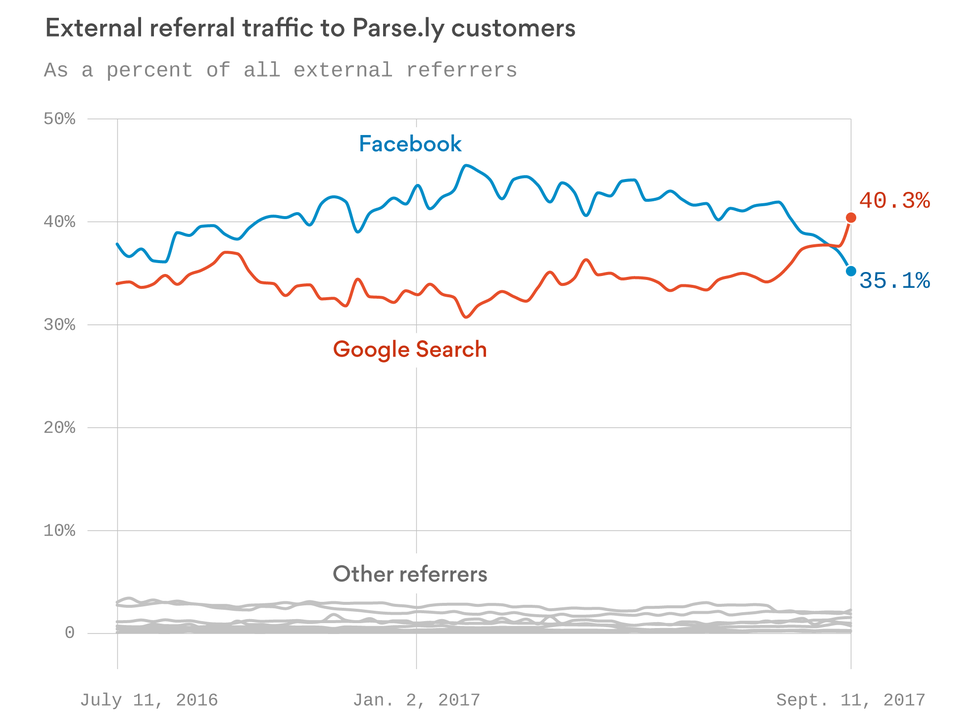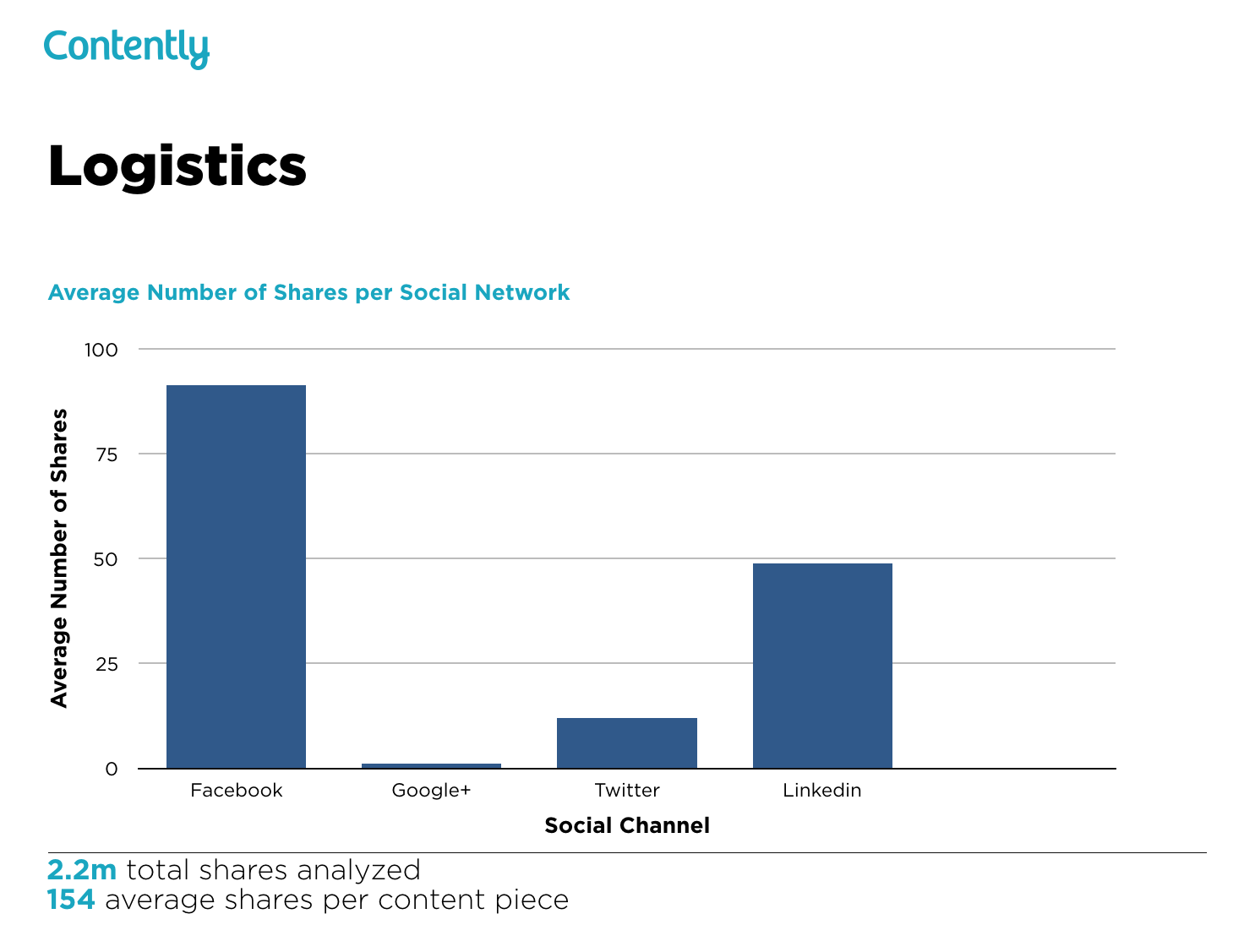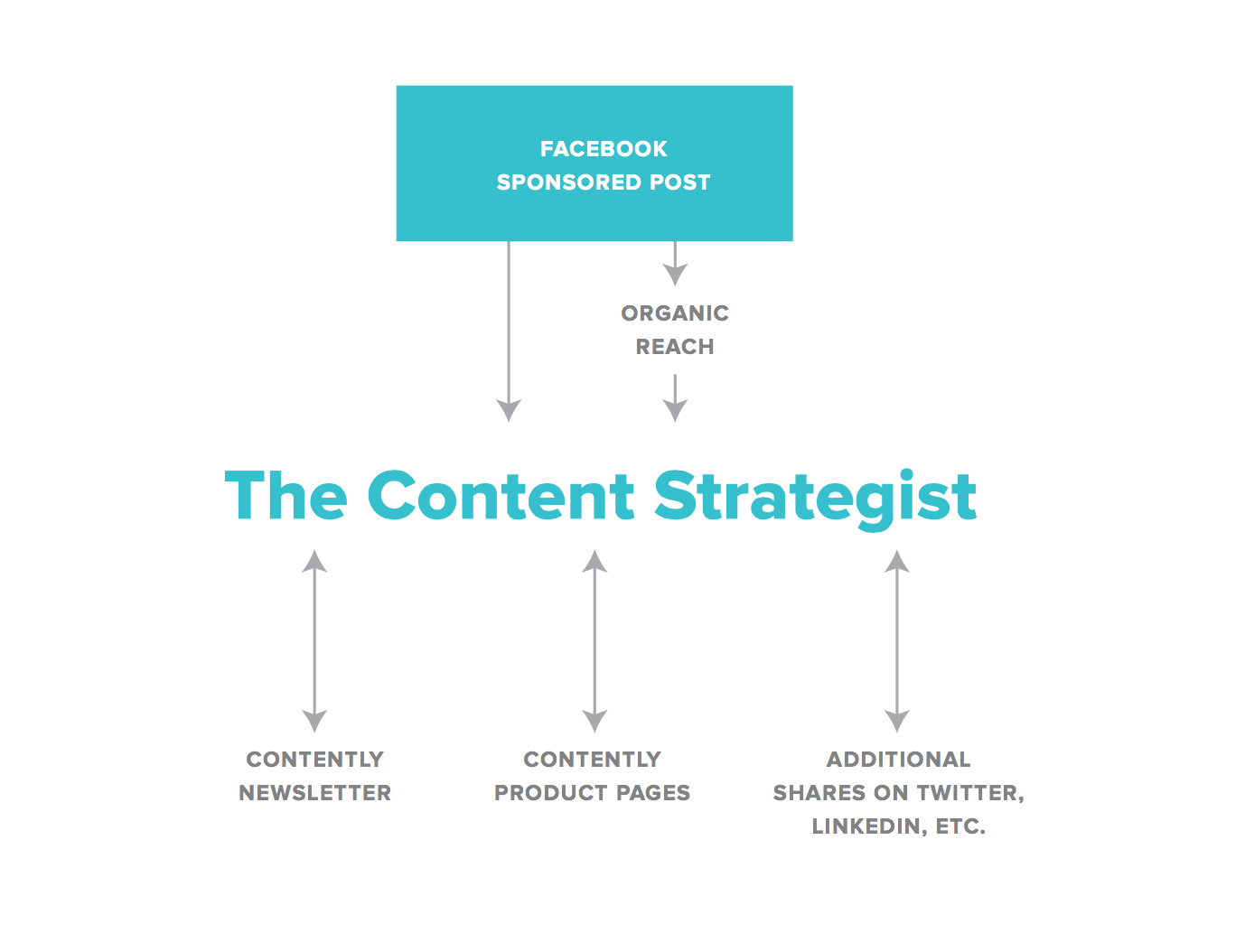Social
2 Reasons Facebook’s Latest Algorithm Change Will Impact Marketers
Last week, the world got wind of the biggest Facebook algorithm change in years. Google officially reclaimed its spot as the top source of referral traffic since Facebook overtook it in August 2015, which means the world’s biggest social network has been pushing less and less traffic to content.
According to a Parse.ly data analysis of over 2,500 sites, Facebook referral traffic now sits at 35.1 percent, while Google referrals are hovering just above 40 percent. Combined, the two tech giants own 85 percent of the mobile ad market and make up nearly 80 percent of all referral traffic to publisher and branded content sites.

Longtime readers of The Content Strategist know we have always kept tabs on the impact of Facebook’s algorithm since it’s such a dominant force in media and marketing. This latest update is huge news for two crucial reasons.
1. Link posts are on the decline
Facebook recently cracked down on clickbait posts that display a fake “play” button to trick people into clicking on a URL, which may explain part of the dip. But in my view, that isn’t the whole story. Facebook has long been transparent about its desire to prioritize native content that keeps you there over links that take you to an external site. It’s time to prepare for another drop in organic traffic to blog posts and other “owned” website content.
2. Paid distribution is more important than ever
For content marketers, Facebook’s biggest value is as a paid distribution network. It has the greatest combination of targeting, reach, and cost efficiency of any distribution platform. And that’s not just for B2C companies. Professional and B2B content performs much better than most marketers realize, even for niche topics such as “Logistics.”

More than ever, paid distribution on Facebook is a crucial tool for driving top-of-funnel engagement and building an audience with the right personas. We used this approach to grow the audience that reads The Content Strategist by 10x. (For a more tactical breakdown of how paid social outperforms organic social, check out this helpful piece written by our cofounder Shane Snow.)

In a recent episode of Pod Save America, HuffPost editor-in-chief Lydia Polgreen had one of the greatest and darkest quotes I’ve heard about the social giant: “We are all unpaid workers toiling in the data mines of Facebook.”
It captures what makes Facebook such a powerful yet precarious tool for marketers. Regardless of your stance on privacy, all of the user data Facebook collects makes it arguably the most powerful ad platform the world has known. You can reach granular audiences at scale in a way that’s never been possible before.
But Facebook is just that—an ad platform. It’s not a benevolent benefactor of free traffic and audiences. That ship sailed around 2011. So Facebook can still take you where you want to go, but you just won’t be able to get there on your own terms.
Image by iStockphotoGet better at your job right now.
Read our monthly newsletter to master content marketing. It’s made for marketers, creators, and everyone in between.




